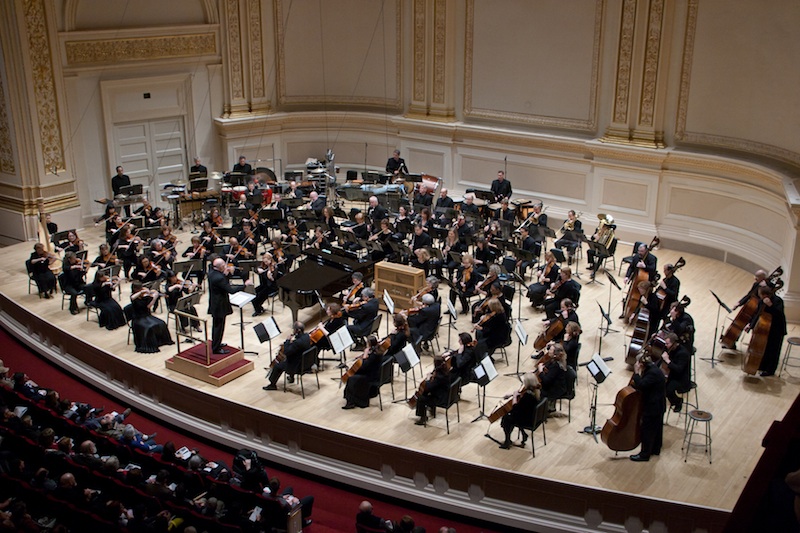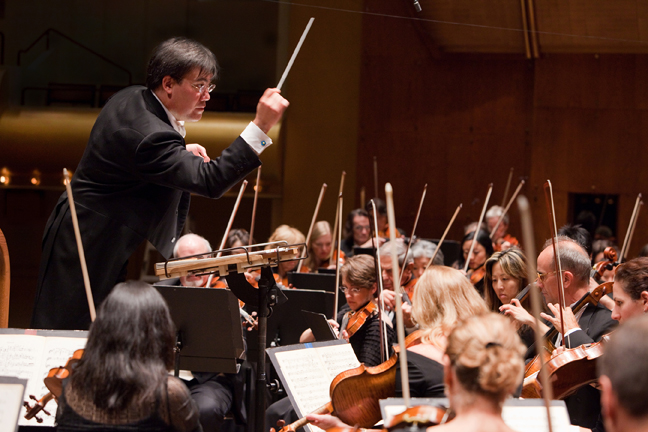The Western nations’ fascination with Eastern cultures is not new, and neither is its expression in Classical music. Both French and Russian music of the late 19th and early 20th centuries abound with such examples. Of course, each composer displays his own individual way of turning his inspiration into sound. Camille Saint-Saëns’ pseudo-orientalism in the Bacchanal scene from his opera Samson et Dalila is a far cry from Claude Debussy’s subtle invocation of the pagodas of Far Eastern temples or Balinese gamelans.
Russian composers too delved into Eastern music to expand and enrich their musical idiom. Furthermore, they encouraged young composers from the Caucasus to draw material from the mine of their Eastern musical heritage. Nicolai Rimsky-Korsakov (1844-1908) who is best known for his suite Scheherazade, once said to his Armenian student, Alexander (Spendiarov) Spendiarian (1871-1928): “You are an Easterner by birth, you have the East in your blood… My East is in my head, it is contemplative”[i].
Reinhold Glière (1874-1956), the first of the Moscow composers to extend a helping hand to the professional music schools in the new republics of the Soviet East, studied Eastern music and explored ways to synthesize it with traditional European music, saying: “Face the real East, which will enrich modern music… with its original melodic patterns and unusual variety of refined rhythms”[ii].
Russian trained Armenian composer Aram Khachaturian reminisced about his first teacher in Moscow, Mikhail Gnessin: “He taught us to love our folk music and developed our taste of harmony”[iii].
With each generation passing, the merging of Eastern and Western elements in music takes on a new character. Every composer’s personal experience with different cultures shapes the way he makes his own synthesis of the various influences. This article will focus on two Armenian composers, Boghos Gelalian (Part I), and one of his students, Serouj Kradjian (Part II) as well as one European composer who collaborates with Eastern musicians, Klaus Hinrich Stahmer (Part III), with a special emphasis on Armenian and/or Lebanese influence on their oeuvre.
Part I: Boghos Gelalian, an Eastern Composer at the Crossroad
During the three consecutive years of its existence (1964-1966), the Lebanese Competition of Musical Composition, organized by Les jeunesses musicales du Liban, gave an opportunity to its jury members, all European composers invited to Lebanon for the occasion, to express their interest in the role of the Lebanese composer who, they believed, was in an ideal position to make an osmosis between Eastern and Western music, benefiting from the combination of his Eastern cultural roots and his Western education. The most remarkable talent that emerged during these competitions was the Armenian-born Boghos Gelalian (1927-2011)[iv].
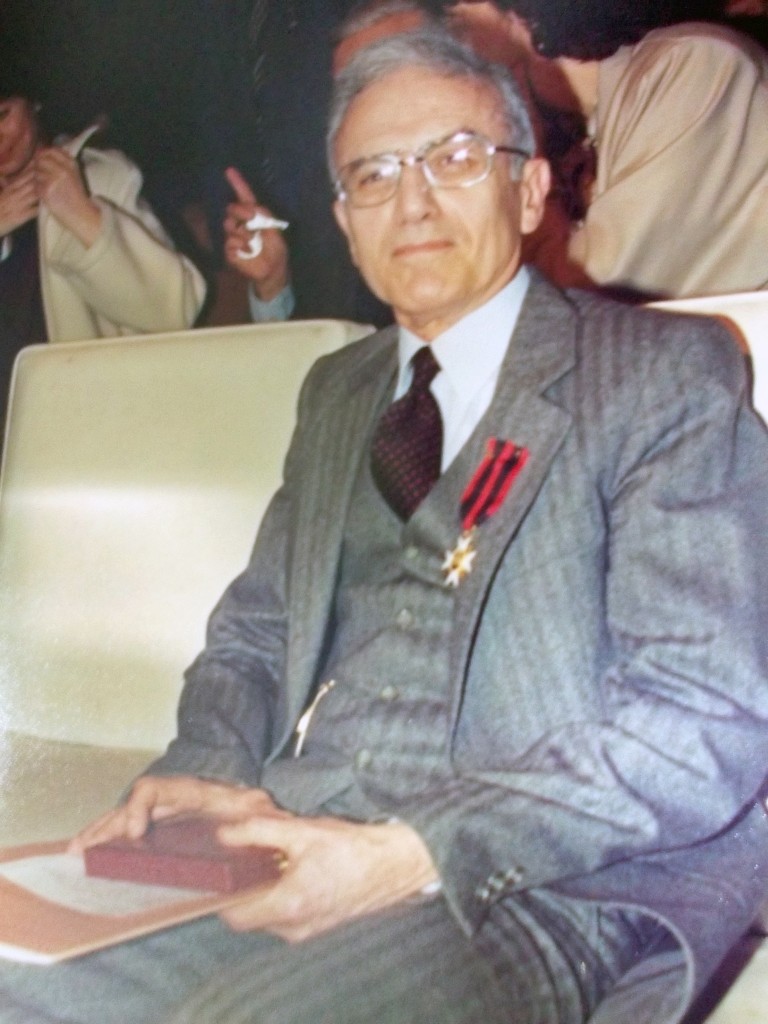
Boghos Gelalian
Born in Alexandretta to Armenian parents who were orphans of the Armenian Genocide, an orphan himself (his father and siblings, like thousands of other Armenian refugees placed in Alexandretta, succumbed to malaria), Gelalian, who was boarding with the Italian Carmelite Fathers, was transferred to Lebanon in 1939 when Alexandretta was annexed by Turkey. As a young child he had been exposed to Armenian and Turkish music in his family, then discovered Western Classical music while studying at the Carmelite boarding school, learning to play various instruments, and accompanying the Latin mass. By age fifteen, Gelalian was on his own in Beirut. In order to survive, he had to play in night clubs as well as upscale hotels. His financial resources being limited, he had to be satisfied with sporadic music lessons, mainly studying composition with Baron Erhast Belling, the former conductor of the orchestra of the Russian Tsar’s Imperial Palace, and Bertrand Robilliard, a French organist and professor of mathematics at the Université St. Joseph. He also accompanied the vocal classes of Mme. Marie Koussevitzky (the famous conductor’s first wife) at the National Conservatory of Beirut, as well as the Armenian church choir. Later, he was hired at the Middle Eastern branch of the BBC as accompanist for the musical programs of the Rahbani brothers. The war of Suez in 1956 put an end to those programs, but Gelalian’s collaboration with the well known Lebanese brothers lasted many decades, allowing him to discover and assimilate Arabic music.
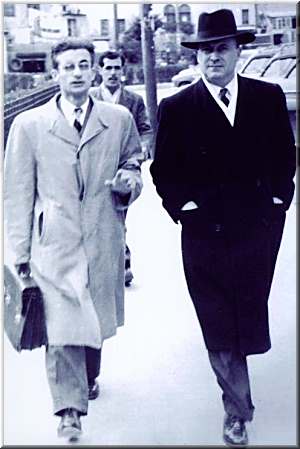
Toufic Souccar with Bertrand Robilliard
His exposure to various genres of music, from Armenian and Turkish traditional music, to Western light music, jazz, Latin, classical, liturgical, and finally Arabic, gave Gelalian a unique formation as a composer. Mostly self-taught, Gelalian discovered early his leaning towards Eastern sounds. While developing his composer’s skills according to Western canons through the treatises of European composers such as Hector Berlioz, Nicolai Rimsky-Korsakov and Charles Köchlin, he also studied the works of Armenian classical composers such as Spendiarian, Komitas and Khachaturian, to name a few. Moreover, he examined closely the works of Spanish and Russian composers, that he thought were good examples to follow in modal harmony, while still considering J.S. Bach as an “inexhaustible source”.
In the 1960’s Beirut was being introduced to European avant-garde music. Karlheinz Stockhausen was in Lebanon in 1969 for the performance of his work Jeita that took place in the grotto of the same name north of Beirut. Moreover, European composers who were invited as jury members for the Lebanese Competition of Musical Composition, challenged the Lebanese composers to explore a more contemporary idiom.
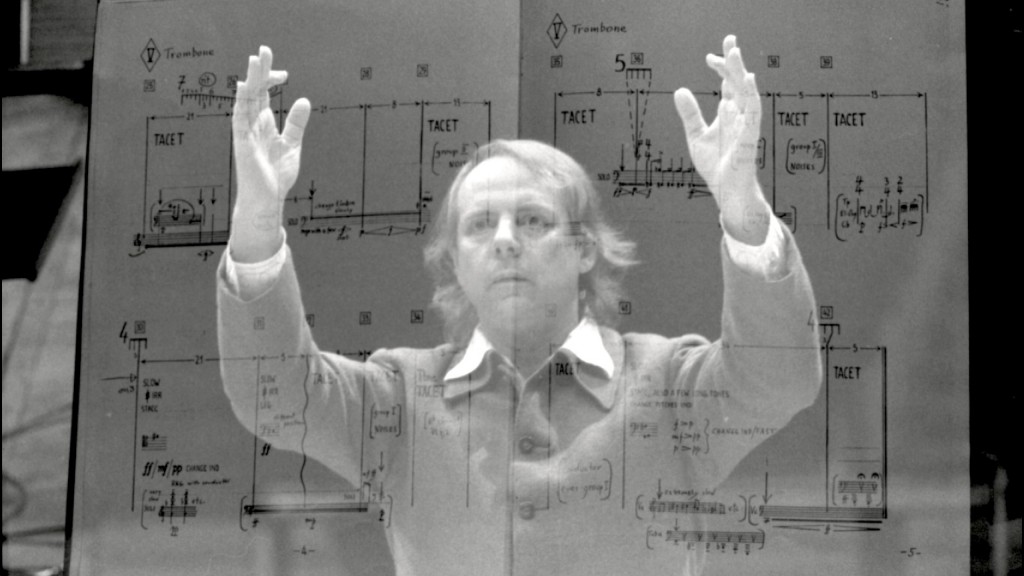
Karlheinz Stockhausen
Gelalian was sensitive to the new influence, but resolved to find his personal voice, inspired by Armenian and Middle-Eastern modes. By creatively exploiting the chromatic fragments of such scales, inventing new, artificial scales based on them, then experimenting with their harmonization, Gelalian reached a degree of chromaticism that verges on atonal music. He also experimented with the use of modal cadences (based on a descending diminished fourth), the occasional melismatic development of the melody (hence, a freer approach to rhythm), as well as Armenian and Middle-Eastern rhythmic patterns.
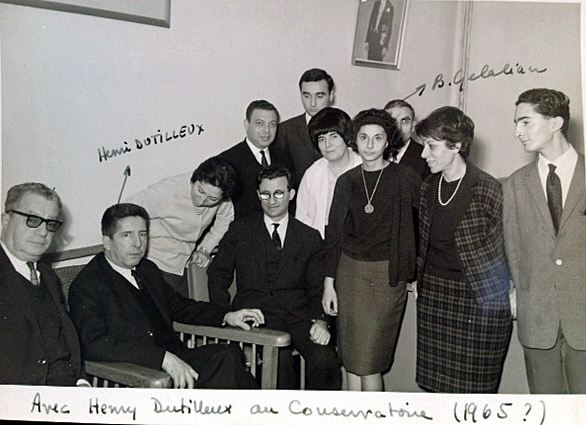
Michel Cheskinoff, Henri Dutilleux, Toufic Souccar, Boghos Gelalian, Diana Takieddine, Leila Awad, Wadad Mouzannar
Gelalian invented the French adjective orientalisant to describe his work which alludes to the Middle-East and is inspired by it without thematic borrowing. Intensely melodic, driven by incessant rhythmic energy, harmonically quite intricate, and highly original, Gelalian’s music strives to transcend all national and cultural barriers to reach a universal public. A French-Armenian critic writes, “From the first hearing I was struck by the spontaneity and restraint of this music, as well as its instrumental writing that tends resolutely towards modernism […]. The listener is pleasantly surprised to find not only Armenian folk inspiration, but also a universal dimension that allows any audience to assimilate and accept it very quickly.”[v]
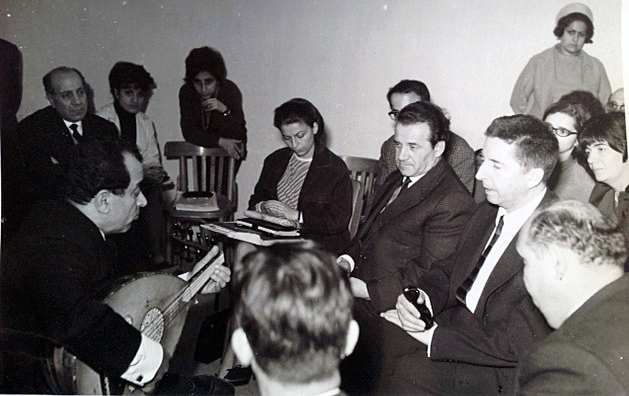
Madeleine Medawar,Henri Dutilleux, Diana Takieddine, Antoine Farah playing the Oud
Throughout the 60’s and the 70’s Gelalian was hailed as one of the most outstanding talents in his country. He won First, Second and Fourth Prizes in the first edition of the Lebanese Competition of Musical Composition in 1964, and Second Prize in the third edition in 1966 receiving the acknowledgement of such renowned European composers as Pierre Petit, Henri Dutilleux, Hans Heinz Stuckenschmidt, and others.
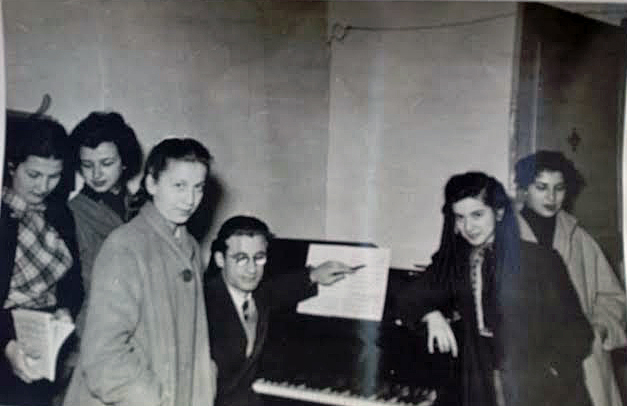
Madeleine Medawar, Toufic Souccar, Arpine Pehlivanian
Gelalian’s multifaceted musical career also included collaborating with singers, such as soprano Arpiné Pehlivanian, and the Diva of Lebanese folklore, Feiruz, orchestral arrangements for the Lahoud Brothers’ musical shows, and teaching piano and harmony at the Beirut National Conservatory of Music. He is the author of a didactic book, Harmonie tonale et modes (1971, 1973) in which he explains his approach to modal harmony, with examples from his own compositions.
He has composed for piano, violin, cello, oboe, flute, voice and orchestra, along with numerous choral and orchestral arrangements. Among his published works are worth mentioning: Sonata per pianoforte (Éditions Françaises de Musique, Maison de L’O.R.T.F., Paris, 1965); Due Vocalizzi per Soprano (Edizioni Curci, Milano, 1968); Sept Séquences pour orchestre (Peters, Leipzig, 1971); Tre Cicli for piano (Ricordi Americana, Buenos Aires, 1969); Quatre Jeux pour flûte seule (Éditions Robert Martin, Mâcon, France, 1979).
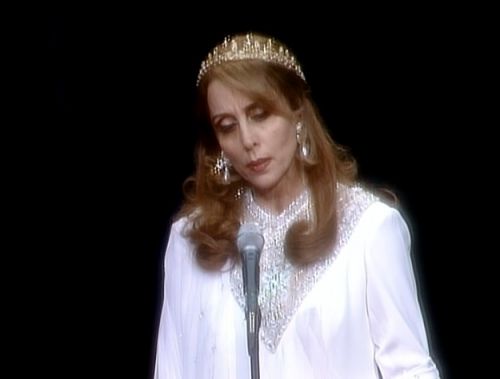
Fairuz
Regrettably, there are practically no commercial recordings of Gelalian’s original work at this point, with the exception of an LP recorded by pianist Hasmig Surmelian and violinist Franck Agier (Paris, 1986), including a mixture of piano and violin works, as well as a CD recorded by Wissam Boustany, a Lebanese flautist residing in England, titled Wandering Winds (Dal Segno, 1998), featuring Gelalian’s work for solo flute. The Lebanese pianist Waleed Howrani is perhaps the most outstanding interpreter of Gelalian’s intricate yet brilliant piano music. The music library of the Université Saint-Esprit in Kaslik, Lebanon, possesses recordings of his electrifying live performances.
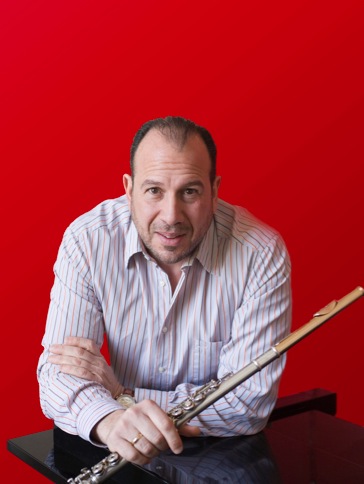
Wissam Boustany
Just as his musical development as a student was limited by his orphanhood, and later by the Second World War, Boghos Gelalian’s career as a composer also suffered as a result of several wars that affected the Middle East between the 1950’s and the 1990’s, with the subsequent loss of economic security and cultural life, which explains why this talented composer remained unknown to the rest of the world, and why his creative output remained limited. Economic needs pressed him to spend more time teaching, accompanying and writing arrangements, at the expense of creating original compositions. Moreover, the “brain drain” in Lebanon during the war years caused the composer to lose his favorite interpreters. When asked in the early 1990’s why he no longer composed, his isolation and sadness were apparent in his response: “Who shall I write for?” Nevertheless, Gelalian’s impact on the Lebanese musical world has been significant, as testimonies of his contemporaries indicate. His legacy survives in the work of his students, such as Ziad Rahbani, the son of Assi Rahbani and Feiruz, who has found his individual style of blending Eastern and Western influence in his own work. Another one of his students, Serouj Kradjian, will be our next topic of discussion.
Part II: Serouj Kradjian, an Eastern Musician in the West
Born in Lebanon to Armenian parents, Serouj Kradjian studied piano with Boghos Gelalian before moving to Toronto, Canada as a teenager, where he pursued his music studies at the University of Toronto, receiving a Bachelor’s Degree in Piano Performance. He completed his postgraduate studies at the Hochschule für Musik in Hanover, Germany, and resided several years in Madrid, Spain where he founded and directed the Camerata Creativa. During the 2008/9 season he became the pianist and co-artistic director of the Amici Ensemble in Toronto, replacing founding member Patricia Parr. The Amici Ensemble consists of three core players, clarinetist Joaquin Valdepeñas, cellist David Hetherington (both members of the Toronto Symphony Orchestra), and pianist Serouj Kradjian, and performs with various guest musicians, hence its name Amici.
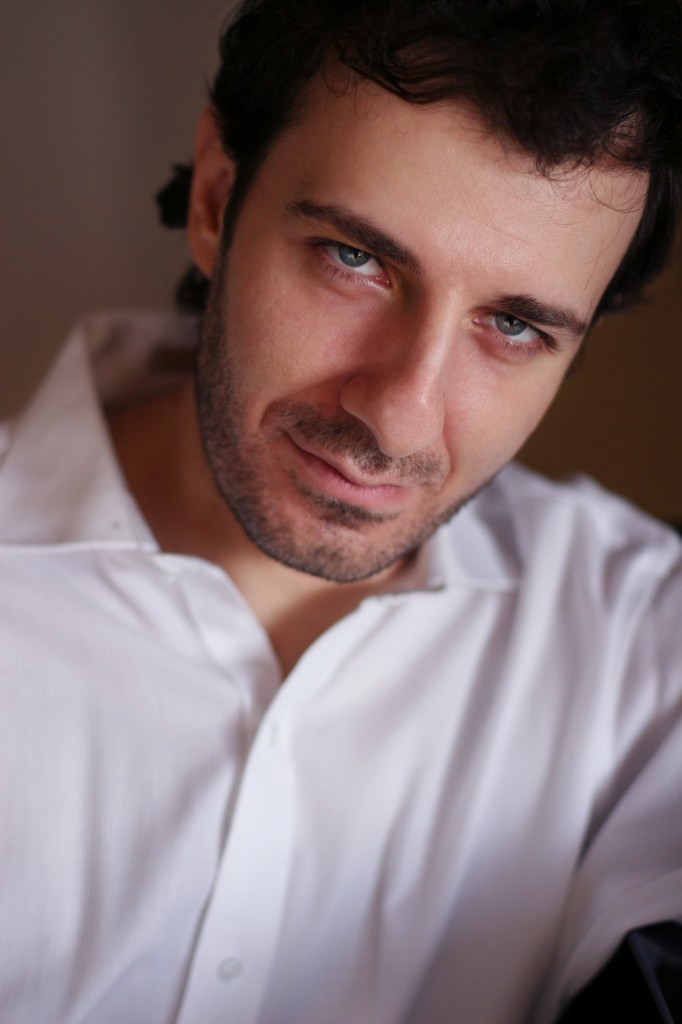
Serouj Kradjian
His collaboration with the Amici on the one hand, and his soprano wife, Isabel Bayrakdarian (also an Armenian born in Lebanon) on the other, have led Kradjian not only to display his ability as a brilliant pianist and seasoned collaborative artist, but also – to the surprise of many – as an arranger and composer with a remarkable versatility of styles, ranging from Western contemporary to Armenian, Arabic, and Spanish, to name a few.
His discography traces the path of his career and his gradual transformation into a multitalented musician, always ready to explore different styles, drawing from his own cross-cultural background. In his early years, as a soloist, he recorded Liszt’s Transcendental Etudes as well as piano concerti (on the Warner Music Spain label). His collaboration with violinist Ara Melikian resulted in the recording of Miniatures, an anthology of music written by Armenian composers, as well as Robert Schumann’s three violin sonatas (on the Hässler label).
With soprano wife Isabel Bayrakdarian, Kradjian won a 2006 Juno Award for their recording of Pauline Viardot-Garcia’s songs (Analekta label, 2004). A subsequent recording by the couple dedicated to the songs of Father Komitas (on the CD spelled Gomidas, Nonesuch 2008) received a Grammy nomination in 2009. The repertoire selection of Gomidas Songs consists of folk songs that the musician priest had collected and arranged for the concert stage, with piano accompaniment. Kradjian has tastefully re-arranged the accompaniment for Western chamber orchestra, with the occasional use of the duduk, the Armenian traditional reed instrument. Moreover, his carefully researched liner notes allow the listener to further understand the background history of these Armenian national gems.
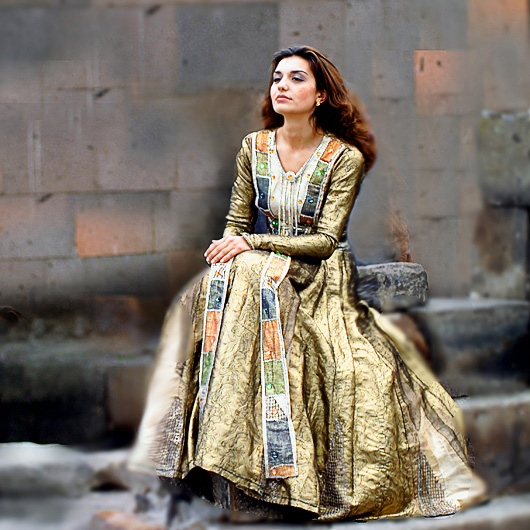
Isabel Bayrakdarian
Between the two aforementioned recordings, Kradjian and Bayrakdarian had the time to release another critically acclaimed recording, Tango Notturno (Canadian Broadcasting Corporation, 2007), a collection of tangos from various countries. Here again, Kradjian displays his talent as arranger and improviser, in addition to that of a brilliant pianist, whereas Bayrakdarian, who enchants the listener with her warm and passionate singing, sounds equally at ease in Armenian, Arabic, Spanish, Finnish, French, German and Italian.
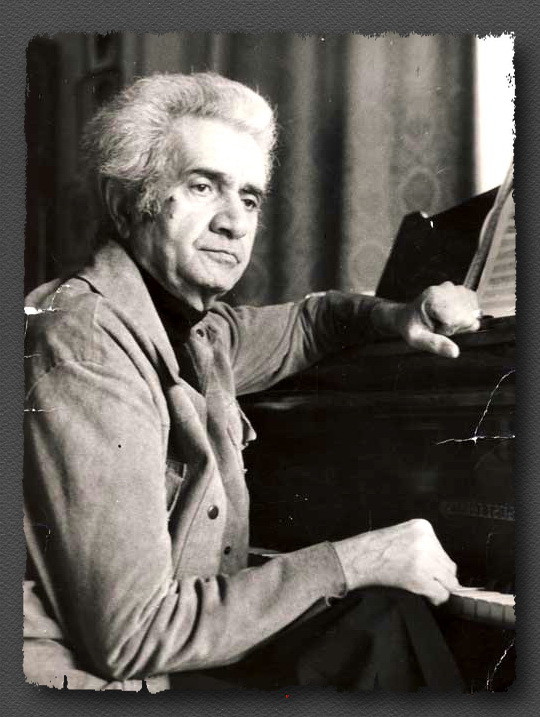
Alexander Arutiunian
The first recording that Kradjian made since his collaboration with the Amici Ensemble of Toronto, Armenian Chamber Music (ATMA Classique, 2010), received a Juno nomination in 2011. A bold first step for the new pianist of an ensemble that for over twenty years had been focusing primarily on Western repertoire. The selections on this CD consist of some of the most outstanding chamber works of the Armenian repertoire, such as Arno Babajanian’s Trio for violin, cello and piano, Aram Khachaturian’s Trio for clarinet, violin and piano, Alexander Arutiunian’s Suite for clarinet, violin and piano. Perhaps the most unexpected novelty of this recording is an original composition by Serouj Kradjian, Elegy for Restive Souls. Written in memory of the 20,000 plus victims of the earthquake that devastated Armenia in December 1988, the work is rich with allusions to Armenian traditional music, folk as well as spiritual. Following it is Parsegh Ganachian’s Lullaby, Oror, arranged for clarinet and four cellos by Kradjian, and exquisitely sung by Bayrakdarian.
Kradjian’s exploration of cross-cultural compositions grows steadfastly from here. In his words, when he presented the idea of a CD dedicated to music evoking the Levant (Western Asia) and including works by Middle Eastern composers, his Amici colleagues were “amused” and “intrigued”. The recording won a Juno Award in 2013, the first in the Amici Ensemble’s 25 year history. As Kradjian explains in the liner notes, “Numerous musical traditions have influenced what we now call Middle Eastern music. The musical instruments of ancient Greece; Jewish music […]; medieval Armenian and Syriac hymns; the strongly melodic Arabic scale […]; Arabic stringed and percussion instruments – all have played an important role in developing a musical culture that has inspired and fascinated composers of Western music in the last two centuries.”
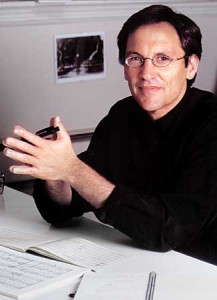
Osvaldo Golijov
The selections on this CD are mostly new to the Western listener, with a few exceptions such as Sergei Prokofiev’s Overture on Hebrew Themes for clarinet, string quartet and piano, Op. 34, and Alexander Glazunov’s Rêverie orientale, Op. 14, No. 2 for clarinet and string quartet. For the rest, the listener is invited to explore a very original repertoire by such composers as the Greek-Armenian spiritual teacher George Gurdjieff, the Armenian composer and musicologist Gayané Chebotarian, the Iraqi-born Syrian conductor, composer and educator Solhi Al-Wadi, the Lebanese Rabih Abou-Khalil, the Yugoslav composer and educator Marko Tajčević, and Jewish-Argentinian composer Osvaldo Golijov whose work Levante gave its name to this CD. Extensive liner notes by Kradjian are very helpful in understanding the background of each composer and their work. Born in the Levant himself, perfectly at ease in all the styles in which he performs, Serouj Kradjian is the perfect link between the Western audiences and the Eastern (or Eastern influenced) music that he offers.
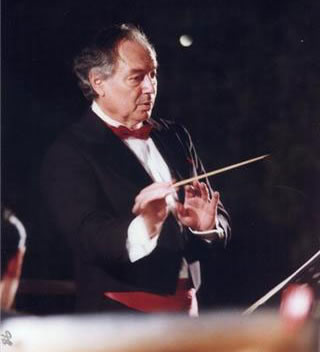
Solhi Al Wadi
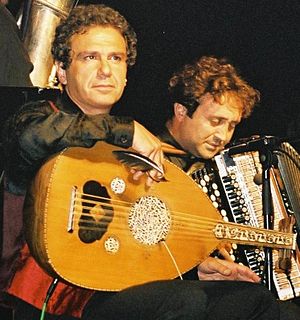
Rabih Abou Khalil
His last recording is a recent Juno nominee: Troubadour and the Nightingale (MCO Records, 2013), in collaboration with the Manitoba Chamber Orchestra, conductor Anne Manson, and featuring soprano Isabel Bayrakdarian, brings Kradjian’s versatile and creative talent to a culmination. In the detailed and informative liner notes, the composer explains that the idea of this recording developed through his interest in “the lives, poetry and music of the trobairitz, who were the female troubadours of the 12th and 13th centuries, emerging from Occitania, in the South of France, bordering Spain.” Their art flourished during the Crusades, but with the return of men from the war, this “beautiful and unique tradition, which had a life span of about sixty years, simply disappeared”.

The trobairitz were Occitan female troubadours of the 12th and 13th centuries.
Kradjian explains that he was especially fascinated by the enigma surrounding the life and work of one female troubadour, Trobairitz Ysabella, whose real identity remains a mystery. His original work titled Trobairitz Ysabella[vi] is his interpretation of her journey, “while exploring her possible identities.” An instrumental overture is followed by A Woman from Périgord, which is based on two canzos (songs) composed by the most famous trobairitz of the period, Comtessa del Dia, who was a contemporary of Ysabella. This movement is sung in the Occitane language. The next piece explores her journey From Jerusalem to Andalusia. “The first part is a mystical and evocative medieval prayer in Hebrew”, which is followed by a Mouashah, “a sophisticated musical genre that originated in Arab Andalusia. The text is taken from a passionate and daring poem in Arabic by Hafza Bint al Hajj, who was one of the very few female poets in medieval Andalusia.” The final movement, Duel with Elias Cayrel, “is the English translation of the only surviving tenso (poem) originally written by Trobairitz Ysabella.”
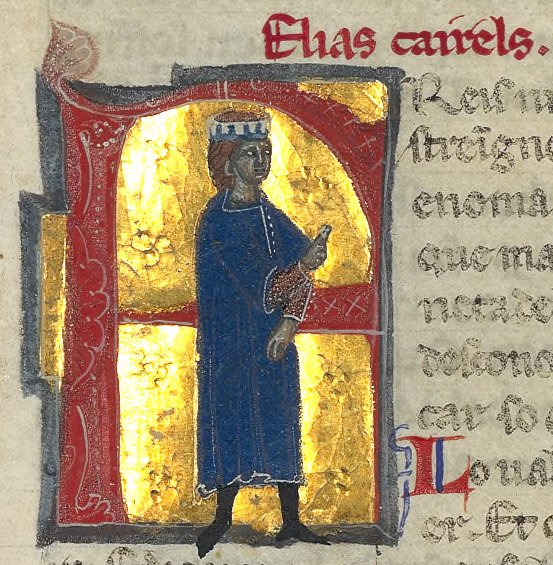
Elias Cayrel from a 13th-century chansonnier
The theme of the troubadours presents an excellent opportunity to Kradjian and Bayrakdarian to introduce to their Western audience the greatest of 18th century Armenian troubadours, Sayat Nova, with four of his most beloved songs: Nazani, Blbouli Hit, Kani Voor Janim, and Kamancha. This is not a purist’s version, but rather one that aims at a universal audience with a taste for classical music. Kradjian’s orchestration for Western orchestra (with the addition of the oud and frame drum) evokes the traditional instruments and playing style that are habitually used in Sayat Nova’s songs.
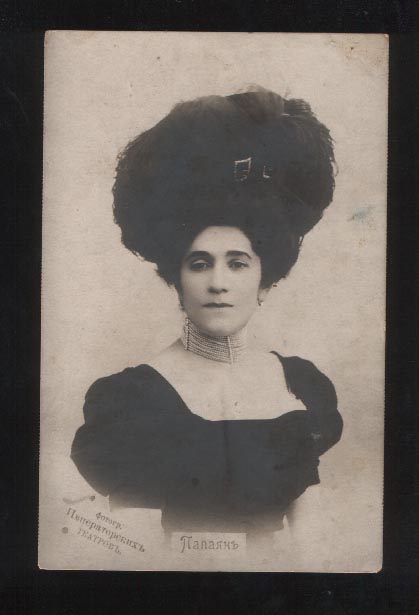
Marguerite Babaïan
And lastly, the Mediterranean context evoked by Trobairitz Ysabella, invites the French composer Maurice Ravel to be part of the repertoire in this recording with Kaddish, a prayer in Aramaic, as well as the cycle Five Greek Songs. This recording also features a less frequently performed sixth Greek song, Tripatos, dedicated to the Armenian soprano Marguerite Babaian who had requested it from the composer, and who sang the cycle very often. All of these songs have been arranged for chamber orchestra by Kradjian.
The “Nightingale” of this recording is of course Isabel Bayrakdarian. Her warm and captivating voice, radiant and supple, captures well the Mediterranean temperament. Her expressive range is wide and colorful, and her ease with the various styles and languages perfectly matches her composer husband’s versatility.
Partners in life and in music, Serouj Kradjian and Isabel Bayrakdarian have well understood the growing curiosity of Western audiences for new repertoire that has its roots in various cultures, new and old. Drawing on their own qualities as Eastern born and Western educated artists, and incessantly researching original themes and repertoire, they have carved a distinct niche for themselves in the highly competitive field of musical performance. It would be fair to state that the Canadian multicultural environment that celebrates diversity, as well as the presence of a number of highly talented musicians in Toronto – including Kradjian’s partners in the Amici Ensemble, in addition to an eager audience, combined with their own talent and amazing versatility, have all contributed to the development of two exciting careers.
Part III: Klaus Hinrich Stahmer: The Western Composer and the Possibilities Offered by Avant-Garde Music
As an increasing number of Eastern people travel to Western countries (permanently or temporarily), the interaction between the two cultures, East and West takes on a greater significance than in the past. The Western composer’s proximity to Easterners allows him to exchange knowledge and experience firsthand with more thoroughness than ever. Moreover, the advent of the internet has helped to obliterate the barriers between East and West very fast, offering the Western composer endless examples of music from all over the world to explore.
In addition to the above, avant-garde music gives the composer experimental opportunities that were previously impossible with the use of more traditional compositional techniques. In the hands of an insightful composer, the combination of avant-garde and Eastern inspiration can result in a music that is attractive and refreshing. Such is the case of the German composer and musicologist, Klaus Hinrich Stahmer, who also works as a freelance author for the Bavarian Broadcasting Corporation in the field of world music.
Stahmer has developed a keen interest in composers of Eastern origin who use contemporary Western musical language while incorporating elements from their cultural tradition in their works. By exploring these composers’ styles, he strives to expand his own musical expression: an approach that reminds one of certain composers from the turn of the last century, such as Debussy, but with a contemporary twist. In his correspondence with the author of these lines, Stahmer states,“When investigating other countries with the special respect to their contemporary music, one of my aims is to learn more about my colleagues [who are] rooted in these foreign (for us) cultures and their approach towards Western modern style. Because I myself with my roots in so called avant-garde thinking and writing have found our Western music much too narrow minded and try to acculturate Non-European music without entering the swamps of ‘world music’.”

Klaus Hinrich Stahmer
The present article will explore the example of one of Stahmer’s compositions, Gesänge eines Holzsammlers (Songs of a Woodcutter, Ghina’û Hattab in Arabic), based on poems of the Lebanese poet Fuad Rifka (published by WERGO, a division of Schott Music & Media, Mainz, Germany, in 2010, and recorded on ARTIST, catalog number ARTS 8109 2).
In his liner notes, the composer explains that he heard Rifka’s poems at a reading where the poet recited his poems in Arabic after introducing his German audience to their contents through translations beforehand[vii]. Stahmer knew right away that he – in his own words – “wanted to write music for them, but no ‘musical settings’; no songs, but music ‘interpreting’ the poems at a text-less level”[viii]. Then he explains the two reasons why he felt attracted to that reading: first, “the ‘speech music’ of Arabic poetry which I could not understand without any knowledge of Arabic, yet ‘enjoyed’ listening to”. He elaborates, “I had never heard the Arabic language spoken in such a melodious and loving way – that was a tone which I was looking for in my music!”[ix]
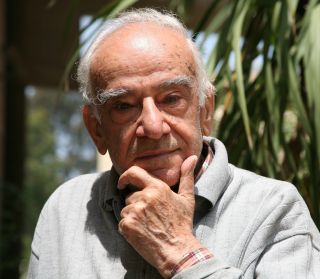
Fuad Rifka
The second reason for Stahmer’s interest in Rifka’s poetry is the subject matter: “the content of the diary-like notes of an eighty-year-old who had braved all dangers, who had not abandoned his home country Lebanon during the fifteen years of civil war, and who sees himself today as a survivor whenever he thinks of old times and friends. Even twenty years after the end of the battles, his country knows the word ‘peace’ only from hearsay: This is what Rifka’s poems talk about in powerful images and concise language, too.” Of course the composer had a chance to work with the poet in person, since the latter regularly spent several days in Germany, during which “Rifka’s views of the world and attitude towards life were gradually revealed to me.”
Stahmer wanted to “document the unmistakable sound of Rifka’s voice (…). The ‘speech music’ of the Arabic language was to become part of my composition, and I wanted to be able to listen to these recordings again and again and have my music developed out of it.”
The final work that lasts over 72 minutes, is divided into four main parts[x], each part alternating recitation in Arabic, recitation in German translation and musical performance, in various orders:
a) Introduction: Stahmer used one of Rifka’s poems as a prologue and “planned to let the whole work begin with an introductory quotation as in classical antiquity (Like the steam rising from the springs / from the woods / the chant rises up…).”
b) Mourning: “consists of texts giving expression to sorrow and grief (“Give the elegies their language/ oh morning star/oh great weeping star).”
c) Fate: Rifka frequently speaks about ‘fate’, which pushed Stahmer to choose poems for this section in which “the Lebanese speaks about the powers that threaten and transform his country.” This is followed by a three part sequence from the poet’s Diary of a Woodcutter “like a nucleus of crystallization. To me, it was like a self-portrait of the poet (He has grown older now / and nobody is with him).”
d) Epilogue
Stahmer’s choice of instruments consists of piano and Oriental frame drum, “an instrument that is not played from music and for which I had to go to great lengths to find out its compositional possibilities. In Murat Çoskun[xi], I found a musician with whom I got on well soon and whose way of eliciting rhythms and ornaments from the big frame drum I was allowed to observe attentively.” Achieving a fine balance between Eastern improvisatory style and Western fixed compositional style, Stahmer concludes, “I wanted to give him space in individual movements so that he could accompany the texts (improvisatorially), in other passages he was to play in accordance with the given notation – an approach from two sides”.
In the sounds of the piano and drum, used both individually and combined, Stahmer has succeeded in finding a most gripping expression of the emotion in Rifka’s poetry. The sparsity of the notation, the harmonic language, as well as the long rests that create a hollowness in which the sound of the piano slowly decays, effectively convey the void created by war and destruction, both emotional and physical, surrounding the isolated “survivor” whose friends either died or emigrated. The pairing of piano and Eastern drum is particularly haunting with the deep resonance of their combined lower pitches.

Gilbert Yammine
Perhaps the most unexpected composition that Stahmer offers in this vast work, is a piece written for qanun (Middle Eastern zither), titled Zikkrayat (Memories)[xii]. He writes, “While listening to many recordings of the Middle Eastern qanun music, my piano style gradually changed and got closer to becoming a monody interspersed with playful elements, and I had the idea of writing something for qanun myself”. Always mindful of maintaining the integrity of the two styles, Stahmer reminds the reader that Middle Eastern modes (Maqam’s) are very different from the Western tempered scales, and therefore combining piano and qanun would be out of question. Instead, “I wanted to invent a specific basic temperament for the instrument, a scale based on Pythagorean perfect thirds, and then the playing technique of my music was to correspond to the traditional techniques of the Middle East without becoming just a copy of it”. In his quest for understanding the instrument and its technique, the composer collaborated with the Lebanese qanun player, Gilbert Yammine, “a versatile master of his trade”.
Very recently the composer made a four movement work out of the passages of the CD, where piano and frame drum play along with the poet’s reading. “Aschenglut” for piano and oriental frame drum will be premiered in Hamburg (April 2014) by Murat Coşkun and Rei Nakamura[xiii]. As for the three piano solo pieces of Gesänge eines Holzsammlers, they recently appeared separately and can be performed under the title Ghina’û Hattab[xiv].
A sampling of other works by the same composer on his web-site[xv] have confirmed the present author’s first impressions: always careful never to fall into cheap imitation of Eastern music, Klaus Hinrich Stahmer has skillfully created a fine balance between Eastern and Western elements in his compositions that are highly original, of a refined taste, and quite attractive.
Conclusion
Both Armenia (in the Caucasus) and Lebanon (in the Middle East) have historically played important roles in connecting East and West, in the fields of trade as well as culture. It is only natural that they continue to play a vital role in the merging of cultures through the work of their artists, or through their influence on Western artists.
The possibilities of merging Eastern and Western music and art are inexhaustible, and depend largely on the individual artist’s talent and creativity. This article attempted to show three different cases of musicians with very different life experiences, each contributing to merging Eastern and Western art in a highly individual manner. Each artist is the mirror of the environment he or she lives in, and has a very unique way of expressing elements of that environment.
LIST OF RECORDINGS
Oeuvres de Boghos Gélalian, Franck Agier (violin), Hasmig Surmelian (piano), Gravure DYAM, Pressage M.P.O., Imprimerie Glory, Paris, 1986 (HS 0586)
Wandering Winds, Wissam Boustany (flute), Dal Segno, 1998
Pauline Viardot-Garcia, Isabel Bayrakdarian (soprano), Serouj Kradjian (piano), Analekta, 2004 (AN 2 9903)
Tango Notturno, Isabel Bayrakdarian (soprano), Serouj Kradjian Tango Ensemble, CBC Records, 2007 (MVCD 1176)
Gomidas Songs, Isabel Bayrakdarian (soprano), Nonesuch Records, 2008 (511487)
Armenian Chamber Music, Amici Chamber Ensemble, ATMA Classique, 2010 (ACD2 2609)
Levant, Amici Ensemble, ATMA Classique, 2012 (ACD2 2655)
Troubadour & the Nightingale, Isabel Bayrakdarian (soprano), Anne Manson (conductor), Manitoba Chamber Orchestra, MCO Records (MCO 013001)
Gesänge eines Holzsammlers, Klaus Hinrich Stahmer, WERGO (a division of SCHOTT MUSIC & MEDIA), Mainz, Germany, 2010, recorded on ARTIST label (ARTS 8109 2)
Notes:
[i] Victor Yuzefovich, Aram Khachaturian, Sphinx Press Inc., New York, 1985, p. 44
[ii] Idem, p. 31
[iii] Idem, p. 27
[iv] All information in Part I is derived from: Araxie Altounian, Boghos Gélalian, l’homme, le musicien, l’oeuvre, Centre d’édition et de diffusion du livre, Université Saint-Esprit de Kaslik, Lebanon, 2002.
[v] Azad, “Un 33 T consacre l”oeuvre de Boghos Gelalian”, in: France Arménie, Paris, 1986 (precise date unknown)
[vi] Commissioned by the Manitoba Chamber Orchestra.
[vii] Fouad Rifka was born in 1930 in Syria, and moved to Lebanon as a child. He held a Doctoral degree in German philosophy from the University of Tübingen, Germany, and was a faculty member of the American Lebanese University (LAU) in Beirut until his death in 2011.
[viii] This and the following quotations are excerpts from Klaus Hinrich Stahmer’s own liner notes for the CD Gesänge eines Holzsammlers.
[ix] In Arabic poetry recitation, long vowels and double consonants are exaggerated highlighting its unique rhythmic character, which explains in part the “melodious” quality of the recitation, the other part being Rifka’s own voice and style.
[x] The formal disposition, including the choice of the poems, was discussed and elaborated between Rifka and Stahmer and can be considered a common product.
[xi] Turkish drummer residing in Germany.
[xii] “Zikkrayat” for Qanun solo (Verlag Neue Musik)
[xiii] “Aschenglut” (Verlag Neue Musik).
[xiv] “Ghina’û Hattab”for piano solo (Verlag Neue Musik).
[xv] www.klaushinrichstahmer.de
–Araxie Altounian for New York Concert Review, New York, NY
Araxie Altounian holds a PhD in Musicology from the Université Saint-Esprit de Kaslik, Lebanon, and a Médaille d’or in piano performance from the Conservatoire Régional de Val Maubuée, France. Established in the Toronto area since 1992, she runs a successful piano studio and is the author of various articles as well as a book, Boghos Gélalian: l’homme, le musicien, l’oeuvre.
by nyconcertreview for New York Concert Review; New York, NY

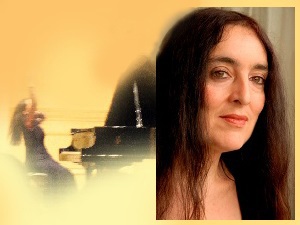
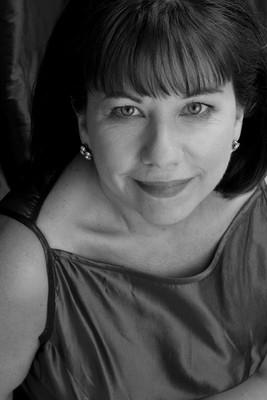
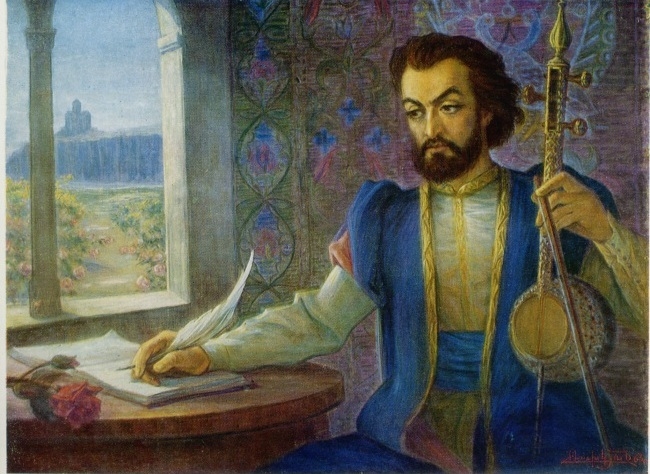
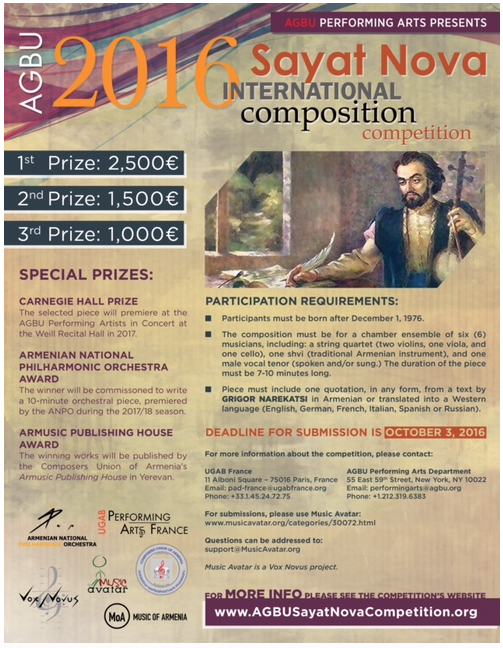
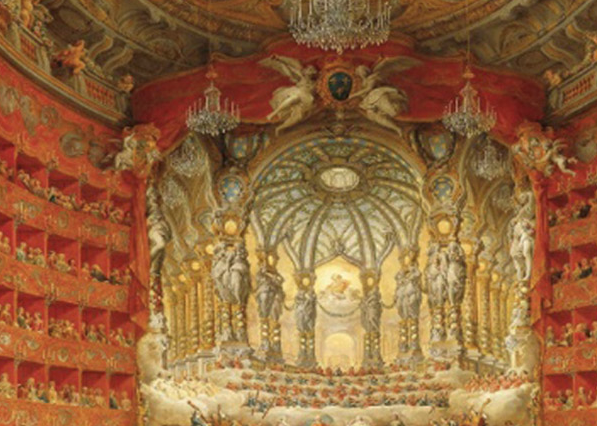
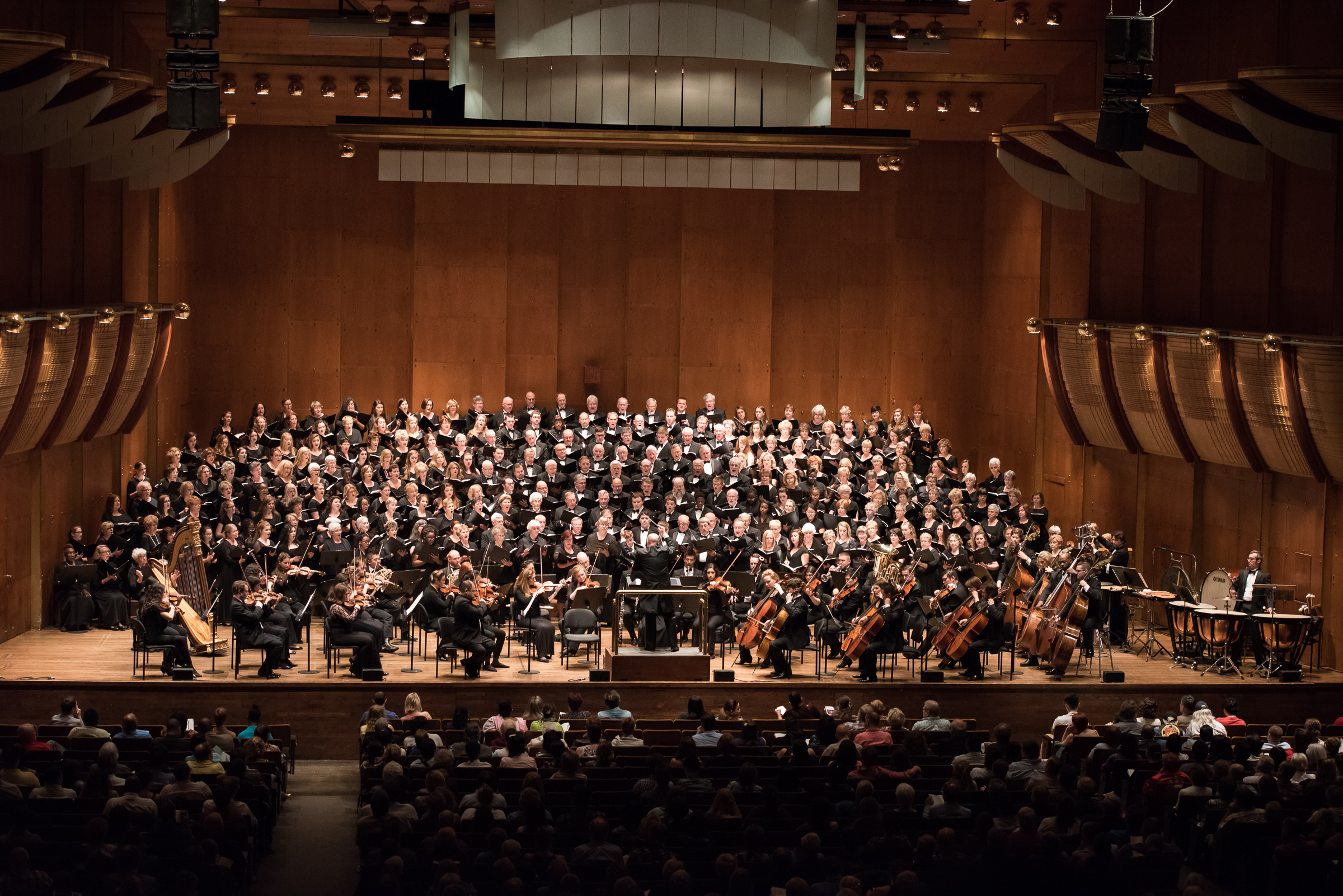
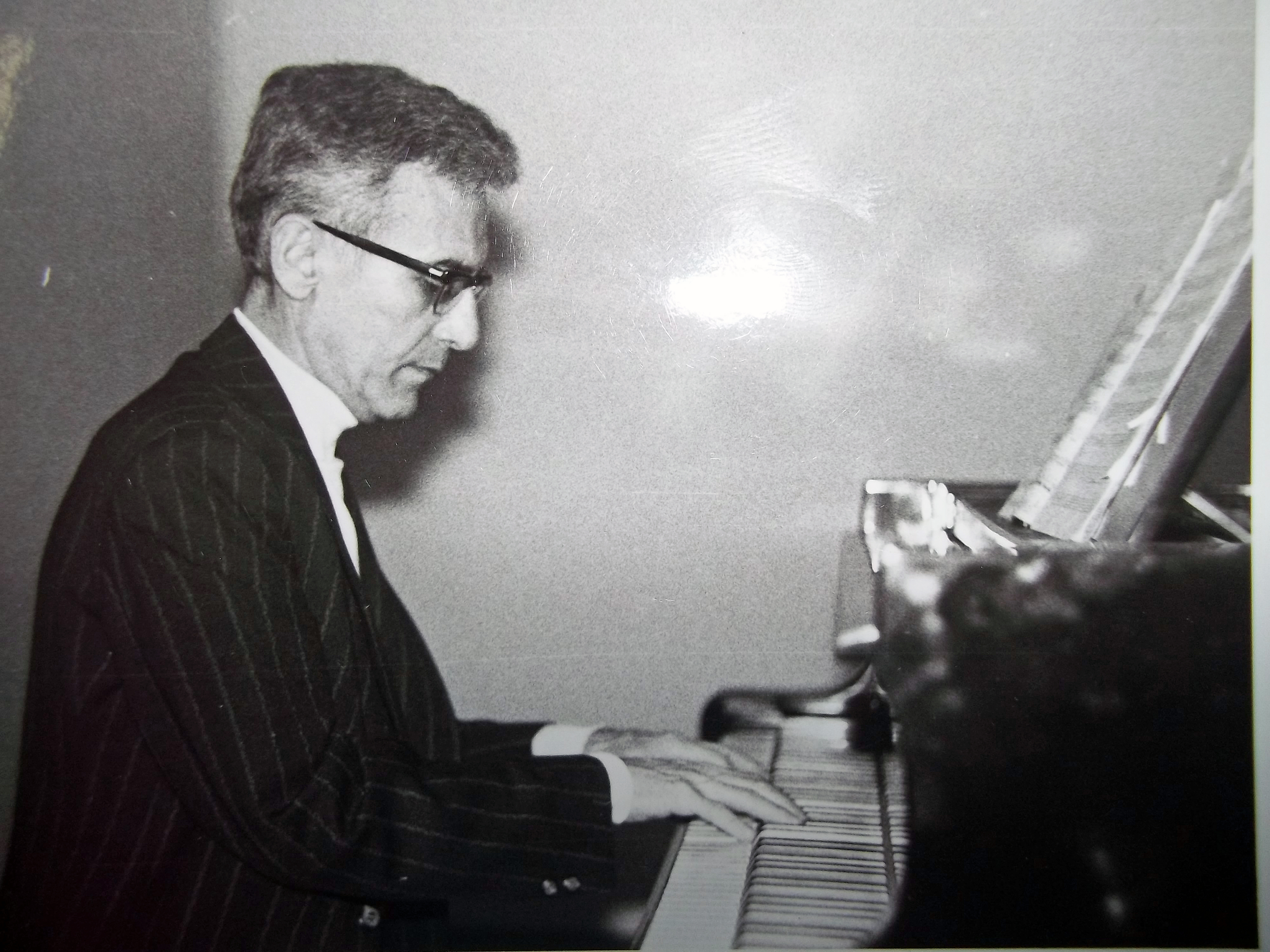




















![[The Flury-Prinz Duo]](https://nyconcertreview.com/blog/wp-content/uploads/2012/02/flier.jpg)
